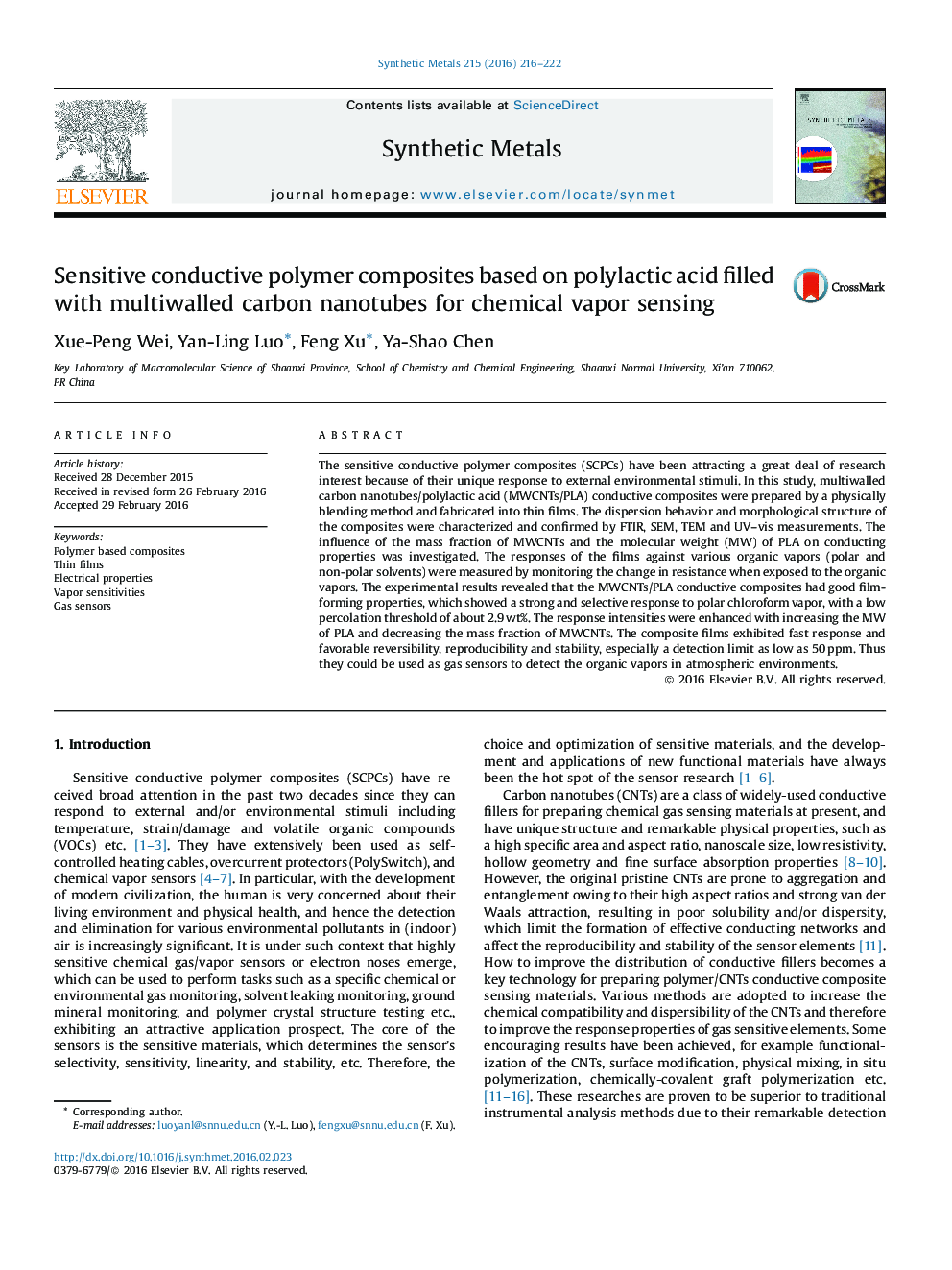| Article ID | Journal | Published Year | Pages | File Type |
|---|---|---|---|---|
| 1440271 | Synthetic Metals | 2016 | 7 Pages |
•Sensitive conductive polymer composites were prepared via a simple blend process.•The conductive nanocomposites exhibited excellent electrical response properties.•The MWCNTs/PLA conductive composites had a low percolation threshold of ca 2.9 wt%.•The conductive films showed fast response, linear correlation, and stability.•The response hinged upon the PLA MW, the MWCNTs contents and vapor concentrations.
The sensitive conductive polymer composites (SCPCs) have been attracting a great deal of research interest because of their unique response to external environmental stimuli. In this study, multiwalled carbon nanotubes/polylactic acid (MWCNTs/PLA) conductive composites were prepared by a physically blending method and fabricated into thin films. The dispersion behavior and morphological structure of the composites were characterized and confirmed by FTIR, SEM, TEM and UV–vis measurements. The influence of the mass fraction of MWCNTs and the molecular weight (MW) of PLA on conducting properties was investigated. The responses of the films against various organic vapors (polar and non-polar solvents) were measured by monitoring the change in resistance when exposed to the organic vapors. The experimental results revealed that the MWCNTs/PLA conductive composites had good film-forming properties, which showed a strong and selective response to polar chloroform vapor, with a low percolation threshold of about 2.9 wt%. The response intensities were enhanced with increasing the MW of PLA and decreasing the mass fraction of MWCNTs. The composite films exhibited fast response and favorable reversibility, reproducibility and stability, especially a detection limit as low as 50 ppm. Thus they could be used as gas sensors to detect the organic vapors in atmospheric environments.
Graphical abstractFigure optionsDownload full-size imageDownload as PowerPoint slide
